An Asian paddy field, also called rice paddy, is a flat, flooded field used to cultivate rice. In the Far East, wet-rice cultivation is most commonly practiced. Even though it uses only a portion of the land, most of the rural population is fed by it. Pests and diseases claim more than a third of the yearly rice crop production.
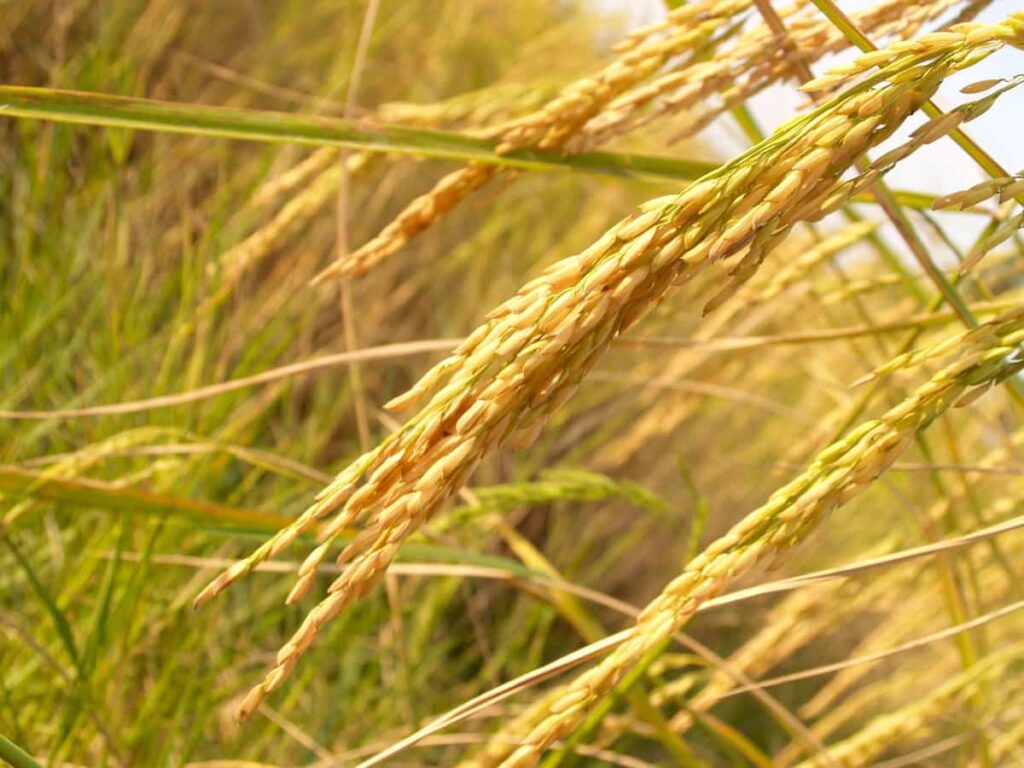
It is crucial to identify our crop enemies and form an environmentally friendly approach to combating them. It is possible to control rice pests and diseases properly by consulting a licensed professional in our area. Below are some of the most common rice pests and diseases.
Insect pest and disease management in Paddy/Rice
Tungro disease
A leafhopper that feeds on Tungro-infected plants transmits Tungro disease viruses to other plants. The green leafhopper is the most efficient vector. Infected plants can transmit viruses to leafhoppers by feeding on them for a short period. A virus can then be transmitted immediately to other plants within 5 to 7 days. Rice plants can be infected with Tungro at any stage of their growth. Tungro-infected plants display yellow or orange-yellow discoloration. Discoloration begins at the leaf tip and extends to the blade or lower leaf portion.
Infected leaves may also exhibit mottled or striped appearances, rust-colored spots, and interveinal necrosis. Tungro-infected plants also show stunting symptoms and delayed flowering, which may delay maturity, reduce the number of tillers, and result in small panicles that are not fully expanded. Furthermore, more common, sterile panicles or partially filled grains covered with dark brown scars.
Chemical control and management
- Use rice varieties that are resistant to the Tungro virus. A synchronous planting schedule and crop rotation can also prevent the spread of this disease.
- Application of Carbofuran 3G at 10-12 kg/acre or spraying of Imidaclorprid 200SL at 40ml or Chloropyriphos 20 EC at 500ml in 200 liters of water. If necessary, repeat in 7-10 days.
- Spraying 2.5gm/lit of urea mixed with Mancozeb at 2 percent can minimize leaf yellowing.
- Due to its high potassium content, multi-K (potassium nitrate) can be sprayed at 1 percent instead of urea.
Blast disease
The blast disease, also known as the rotten neck, is one of the most destructive diseases of rice. Blast symptoms typically appear on leaves, leaf collars, nodes, and panicles, with elliptical leaf spots with gray-white centers and brown to red-brown margins. Approximately 0.4 in. to 0.7 in. long and 0.10 in. to 0.2 in. wide are the dimensions of fully developed leaf lesions.
Depending on the environment, lesion age, and rice variety, the shape and color of the lesion vary. It is very rare for lesions on leaf sheaths, but they are similar to those on leaves. The fungus attacks nodes below the head and causes the most severe damage. It is common for the stems to break at the diseased node. In this stage of the disease, the neck is referred to as rotten.
When the node becomes infected, water and nutrients cannot reach the kernels, and they will stop developing. Depending on the stage of a plant’s development when infection occurs, the head of a damaged plant may be utterly blank to nearly normal. It is common for poorly developed grain to break up badly during milling, resulting in decreased quality.
Chemical control and management
- Planting resistant rice varieties can prevent the blast if the disease is not endemic to the region
- Don’t overfertilize the crop with nitrogen, which increases the plant’s susceptibility to disease.
- Ensure plants don’t suffer from drought stress by managing their water well.
- It is better to sow seeds early after the start of the rainy season than to sow them late.
- It is possible to control the disease with the use of appropriate systemic fungicides when available
| Chemical compound | Dosage |
| Tricylazole 75% WP | 0.6 gm/ litre |
| Propiconazole 25% EC | 1 ml/ litre |
| Carbendazim 50% WP | 1gm/litre |
In case you missed it: Top 20 Steps to Boost Rice Yield: How to Increase Paddy Production and Quality
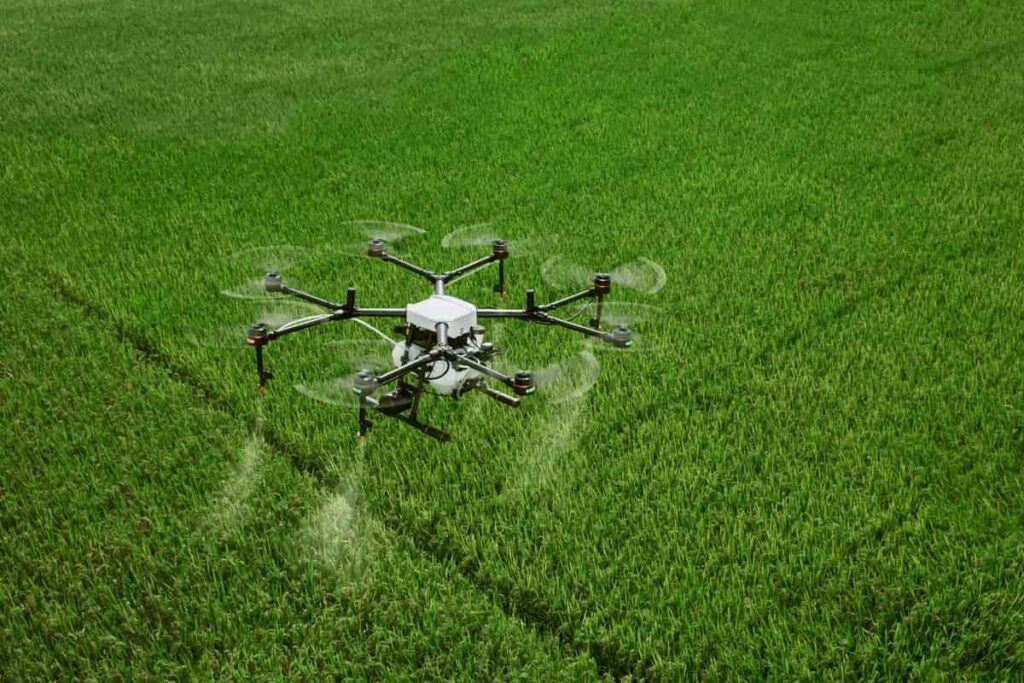
Brown spot
Brown spot infecting leaves, leaf sheaths, panicle branches, spikelets, and glumes is a fungal disease. The most visible damage is the numerous big spots on the leaves, which can kill the entire leaf. Due to infection in the seed, unfilled grains or spotted or discolored seeds form. Lesions on the coleoptile and primary and secondary leaves of infected seedlings are small, circular, oval, and brown, girdling the sheath protecting a young shoot tip.
Seedlings infected with the disease become stunted or die. Lesions on older leaves are small, circular, dark brown, or purplish brown when they are young or underdeveloped. The center is gray or whitish in fully developed lesions on older leaves, and the margin is reddish brown. If the infection is severe, the lesions may coalesce, killing large areas of leaves. There are similar lesions on leaf sheaths as on leaves.
There are dark brown to black oval spots or discolorations on the entire surface of infected glumes and panicle branches. It is also possible for spikelets to become infected—a reduction in grain quality results from an infection of florets that causes incomplete or disrupted grain filling. Pecky rice, caused by fungus that penetrates grains, is a term used to describe spotted and discolored grains.
Chemical control and management
- At tillering and late booting stages, spray Carbendazim 12% + Mancozeb 63% WP @ 1gm/litre or Zineb @ 2gm/litre of water. After 15 days, repeat the spray.
False smut
False smut reduces grain weight by making grains chalky. In addition, it reduces seed germination. This disease is also favored by rain, high humidity, and soils rich in nitrogen, and wind can spread fungal spores from plant to plant. It is only after panicle exsertion that false smut is visible. The plant can become infected during the flowering process.
The pathogen infects the rice plant during the flowering stage and causes chalkiness in the grain. When the spores matured, they turned charcoal black, a greenish velvet color during the sporulation stage, a greenish velvet color during the spore maturation stage, and a mass of velvety spores or yellow fruiting bodies formed from individual rice grains.
During the growth of velvety spores, floral parts become enclosed. The immature spores are flat, smooth, and yellow, with a membrane covering them. Only a few grains are infected in a spikelet. The disease loss in severe cases was as high as 75%. The market value of rice is also reduced as a result.
Chemical control and management
- Seeds should be treated with hot water at 52°C for 10 minutes. Fields and harvested grains should be kept away from infected plants. Rice fields should be kept clean, and resistant varieties should be used. Alternate wetting and drying in the field to maintain humidity.
- During the boot stage, spray Copper oxychloride 50% WP at 2.5 grams per liter.
- Propiconazole 25% EC sprayed at 1ml/liter of water after 15-day intervals will effectively control the disease if it persists.
Sheath blight
The initial lesions are small, ellipsoidal or ovoid, greenish-gray, and water-soaked, usually near the water line in lowland fields. In older lesions, the center is grayish-white, and the margin is light brown to dark brown. Lesions can reach the uppermost leaf under favorable conditions. It is possible for lesions to coalesce, forming larger lesions with irregular shapes and causing the whole leaf to die. When a plant is severely infected, it produces poorly filled or empty grains, especially at the bottom of the panicle.
In case you missed it: Pests and Diseases Management in Cotton: Causes, Symptoms, Chemical, and Biological Control
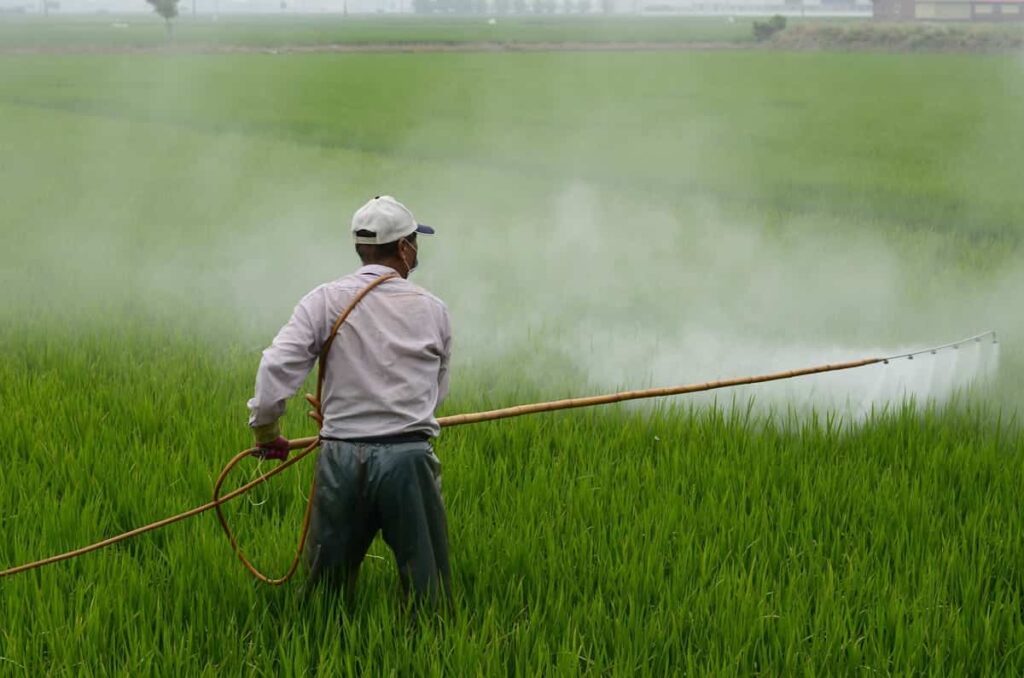
Chemical control and management
- It is essential not to overfertilize plants since excessive nitrogen application has increased disease susceptibility.
- Foliar fungicide applications may be needed; two applications are recommended and should be timed so that the first application is made between the early internode elongation and the second application is made on emerging panicles 10-14 days after the first application.
| Chemical compound | Dosage |
| Propiconazole 25% EC | 1ml/liter |
| Carbenbendazim 50% WP | 1gm/liter |
| Hexaconazole 5% EC | 1 ml/liter |
Sheath rot
The boot leaf sheath may develop oblong or irregular chocolate or brown-colored spots. Young panicles do not emerge and rot entirely or only partially emerge. A white to light-pink mat of mycelium and spore mass covers the grains inside choked panicles and partially emerged panicles. Discoloration of the glume may be observed, along with partially or filled grains.
Chemical control and management
| Chemical compound | Dosage |
| Propiconazole 25% EC | 1ml/liter |
| Carbenbendazim 50% WP | 1gm/liter |
| Hexaconazole 5% EC | 1 ml/liter |
Stem rot
As the first symptom, a small, irregular black lesion appears near the water level on the outer leaf sheath. Infected stem rots display numerous tiny white and black sclerotia and mycelium inside their infected culms as the disease progresses. The infected culm lodged and caused unfilled panicles and chalky grains. Tiller death results from severe infection and infections which reach the culm can cause plants to lodge, panicles to empty, and tillers to die.
Chemical control and management
| Chemical compound | Dosage |
| Thiophanate-methyl 70% WP | 1gm/liter |
| Valigamycin 3L | 2.5 ml/litre |
Insects or pests in Paddy
Rice hispa
In rice hispa, the upper surface of the leaf blade is scraped away, leaving only the lower epidermis. In addition to tunneling through leaf tissues, it also feeds on them. Plants become less vigorous when they suffer severe damage. As alternate hosts, grassy weeds in rice fields encourage the pest to thrive. Damage is also encouraged by heavily fertilized fields.
An abundance of insects is favored by heavy rains, especially in premonsoon or early monsoon periods, followed by abnormally low precipitation, day-night temperature differentials, and high relative humidity. Rainfed and irrigated wetland environments are more likely to host rice hispa during the rainy season.
In case you missed it: How to Use Sticky Traps for Pest Control: Every Gardener and Farmer Must Know Before Starting Plants
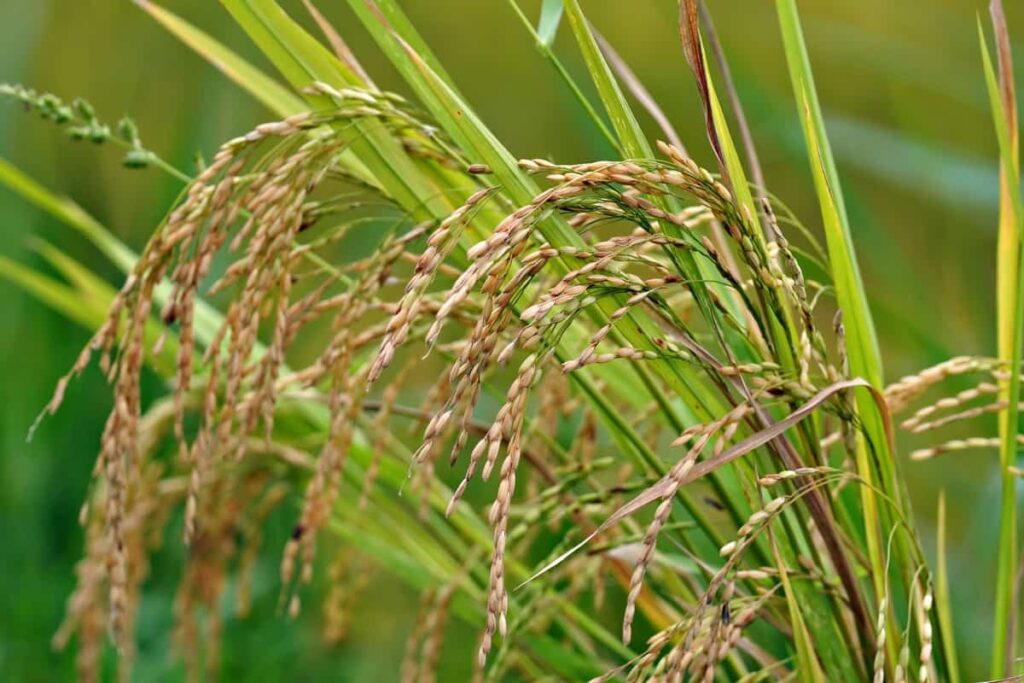
Biological control
- Several species of braconid wasps parasitize larvae, such as Bracon hispae (Viereck), Bracon sp., Campyloneurus sp., and Macrocentrus sp.
- Larvae are parasitized by ichneumonid wasps and eulophids
- A trichogrammatid parasitizes the eggs
- It has been recorded that rhinocoris fuscipes prey on hispa adults.
- Despite the presence of numerous natural enemies, their utilization for control has not been fully explored.
Chemical control
| Chemical compound | Dosage |
| Quinalphos 25 EC | 2000 ml/ha |
| Monocrotophos 36 WSC | 850 ml/ha |
| Chlorpyriphos 20 EC | 1500 ml/ha |
| Triazophos 40 EC | 2 ml/liter of water |
Case worm
A rice caseworm or a leaf case bearer cuts off leaf tips to create a leaf case. The feeding damage they cause can cut leaves at right angles, like a pair of scissors. This insect is likely to be found in rice fields with still water, wetlands, and irrigated environments. The development of the insect is also favored by transplanting young seedlings. Rice fields are commonly found with low populations of this insect.
The adults are nocturnal and are attracted to light traps. The larva hides in its case, which floats on the water surface, and crawls to the rice plant to feed. During the rainy season, severe infestations may occur on dwarf, compact, heavy tillering, and high-yielding varieties. To identify caseworm damage, check for
- Cases of leaves floating in the water
- The leaves are cut at right angles as if they had been cut with scissors
- A leaf with a papery upper epidermis that was fed
- There is usually a ladder-like appearance to skeletonized leaf tissues
It is possible to confuse damage symptoms with those caused by other defoliating insect pests. To confirm the presence of caseworms, visually inspect ladder-like leaf tissues, leaf cases, and cut leaves attached to leaf sheaths and floating on the water surface with the larvae enclosed.
Biological control
- There is no doubt that snails are valuable predators of rice caseworm eggs.
- Hydrophilids and dytiscids feed the larvae.
- Adults are eaten by spiders, dragonflies, and birds
In case you missed it: 15 Cover Crops for Raised Beds: When to Plant, Best Winter and No-till Cover Crops
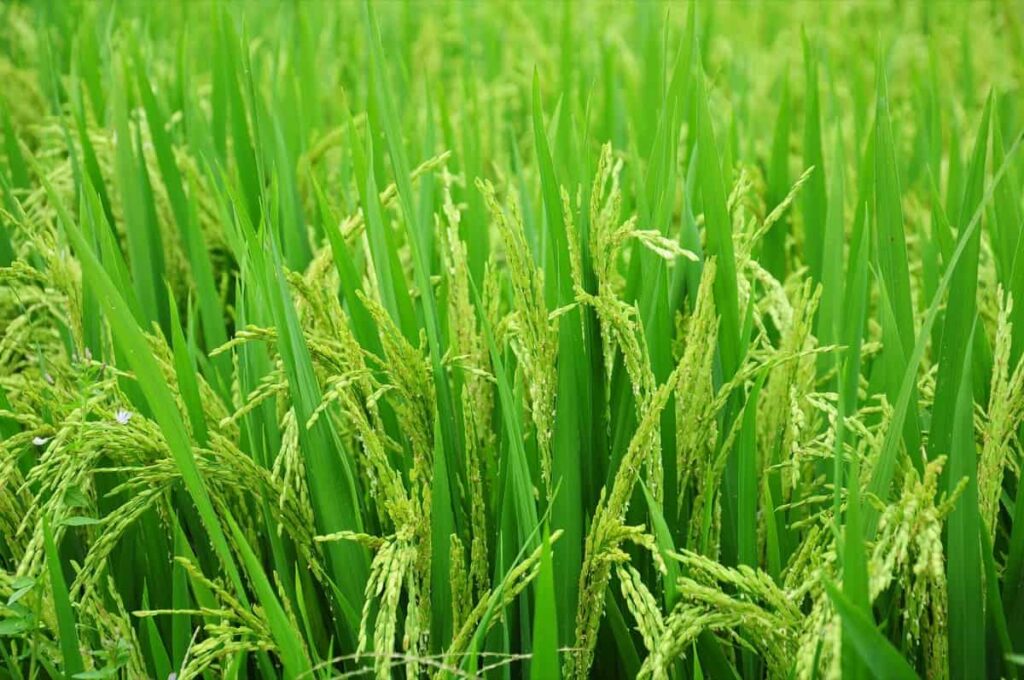
Chemical control
| Chemical compound | Dosage |
| Quinalphos 25 EC | 2000 ml/ha |
| Monocrotophos 36 WSC | 850 ml/ha |
Leaf folder
A leaf folder caterpillar folds a rice leaf around itself and attaches the leaf margins with silk strands. White and transparent streaks are created on the blade of the leaf when they feed inside the folded leaf. As a result of heavy fertilizer use, the insect multiplies rapidly. A high humidity level and shady areas of the field, as well as grassy weeds from rice fields and surrounding borders, all contribute to the development of the pest. Check the plant for the following symptoms:
- Damaged leaves with longitudinal and transparent whitish streaks
- Leaves folded into tubular shapes
- Sometimes, leaf tips are attached to the basal part of the leaf
- Many folded leaves appear on heavily infested fields
Biological control
- On 37, 44, and 51 DAT, release 1 lakh egg parasitoids per hectare of Trichogramma chilonis (Egg Parasitoids).
- During the morning hours, release the egg cards in the field. The egg cards should be tied under the outside leaf surface, and no chemicals should be sprayed three days before and seven days after the field release.
Chemical control
| Chemical compound | Dosage |
| hydrochloride 50 WP | 600 gms/ ha |
| monocrotophos 36 WSC | 850 ml/ha |
| chlorpyriphos 20 EC | 1500 ml/ha |
| Triazophos 40 EC | 2ml/liter water |
Stem borer
The stem borer can destroy rice plants at any stage of their development, from seedlings to mature plants. When they feed on tillers, they cause dead tillers or drying of the central tiller during the vegetative stage, and they cause whiteheads during the reproductive stage. Check the field for the following damage symptoms:
- During the vegetative stage, dead tillers can easily be pulled from the base.
- When the emerging panicles are white and empty, they are whiteheads during the reproductive cycle
- There are tiny holes in the stems and tillers of the plants
- In the damaged stems, there is fecal matter or frass
- Whiteheads and dead tillers are sometimes confused with damage caused by rats, neck blast disease, and black bugs.
In case you missed it: How to Identify and Control Blight on Plants: Causes, Treating it Organically and Chemically
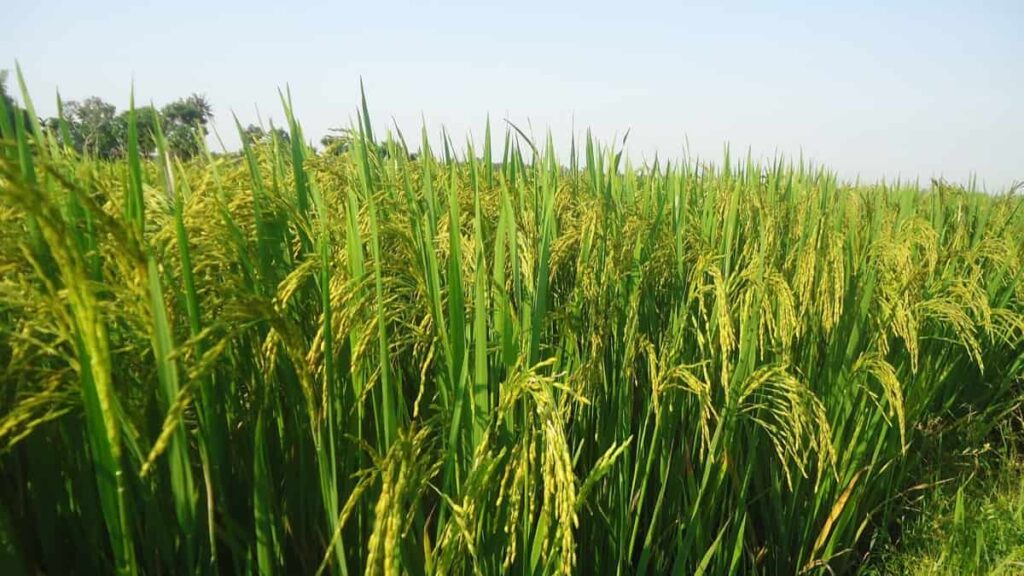
Biological control
- Release Trichogramma japonicum at the action threshold level to control rice yellow stem borer eggs
- Stem borer control with Neem seed kernel extract
Chemical control
| Chemical compound | Dosage |
| Carbofuran 3G | 10-12 kg/acre |
| Chloropyriphos 20 EC | 500 ml/ha |
| monocrotophos 36 WSC | 850 ml/ha |
| cartap hydrochloride 50 WP | 600 gms/ha |
| Triazophos 40 EC | 2 ml/ liter water |
Plant hoppers
Two species of planthoppers infest rice. Brown planthoppers (BPH) and white-backed planthoppers (WBPH) are the two types. The plant dies when the leaves turn orange-yellow and brown and dry because of hopper burn, a condition caused by too many planthoppers. Besides Rice Ragged Stunt, BPH can also transmit RiceGrassy Stunt. Both diseases cannot be cured. Check for the presence of insects:
- A crescent-shaped white egg is inserted into the leaf sheath or midrib
- Brown to white nymphs
- Adults are brown or white and feed near the base of the tillers
Check the field for:
- Yellowing, browning, and drying of plants caused by hopper burn
- Ovipositional marks on plants cause fungus and bacterial infections
- The presence of honeydew and sooty molds at the bases of infected areas
- Diseased plants with ragged stunts or grassy stunts
Biological control
- When brown planthopper incidence peaks, release 200 to 250 bugs/ha of natural enemies like Lycosa pseudoannulata and Cyrtorhinus lividipennis at ten-day intervals.
- Hymenopteran wasps are commonly found parasitizing eggs. Eggs and nymphs are both preyed upon by mirid bugs. Adults and nymphs are eaten by general predators, particularly spiders and coccinellid beetles.
Chemical control
| Chemical compound | Dosage |
| Carbofuran 3G | 10-12 kg/acre |
| Imidaclorprid 200SL | 40 ml/ 200 liters of water |
| Chloropyriphos 20 EC | 50 ml/ 200 liters of water |
Conclusion
Rice diseases must be detected on time to ensure sustainable rice production. Natural pest management prevents problems with pests, plant diseases, and harmful chemicals from entering our bodies. As a result, chemical dependence and pesticide resistance are also avoided. Pesticides might be used, but it is still essential to know if pests are damaging your crops, how much damage they are causing, and whether creatures in your fields are already controlling the pest. You can decide what to use once you know if and when to use chemicals.
- Economical Aquaculture: A Guide to Low-Budget Fish Farming
- 15 Common Planting Errors That Can Doom Your Fruit Trees
- How to Make Houseplants Bushy: Effective Tips and Ideas
- Innovative Strategies for Boosting Coconut Pollination and Yield
- Pollination Strategies for Maximum Pumpkin Yield
- The Complete Guide to Chicken Fattening: Strategies for Maximum Growth
- Natural Solutions for Tulip Problems: 100% Effective Remedies for Leaf and Bulb-Related Issues
- Revolutionizing Citrus Preservation: Towards a Healthier, Greener Future
- Natural Solutions for Peony Leaf and Flower Problems: 100% Effective Remedies
- Maximizing Profits with Avocado Contract Farming in India: A Comprehensive Guide
- Natural Solutions for Hydrangea Problems: 100% Effective Remedies for Leaf and Flowers
- The Ultimate Guide to Choosing the Perfect Foliage Friend: Bringing Life Indoors
- From Sunlight to Sustainability: 15 Ways to Use Solar Technology in Agriculture
- The Ultimate Guide to Dong Tao Chicken: Exploring from History to Raising
- The Eco-Friendly Makeover: How to Convert Your Unused Swimming Pool into a Fish Pond
- Mastering the Art of Delaware Chicken Farming: Essentials for Healthy Backyard Flocks
- 20 Best Homemade Fertilizers for Money Plant: DIY Recipes and Application Methods
- How to Craft a Comprehensive Free-Range Chicken Farming Business Plan
- Brighten Your Flock: Raising Easter Egger Chickens for Beauty and Bounty
- How to Optimize Your Poultry Egg Farm Business Plan with These Strategies
- Subsidy for Spirulina Cultivation: How Indian Government Schemes Encouraging Spirulina Farmers
- Ultimate Guide to Raising Dominique Chickens: Breeding, Feeding, Egg-Production, and Care
- Mastering the Art of Raising Jersey Giant Chickens: Care, Feeding, and More
- Ultimate Guide to Raising Legbar Chickens: Breeding, Farming Practices, Diet, Egg-Production
- How to Raise Welsummer Chickens: A Comprehensive Guide for Beginners
- How to Protect Indoor Plants in Winter: A Comprehensive Guide
- Ultimate Guide to Grow Bag Gardening: Tips, Tricks, and Planting Ideas for Urban Gardeners
- Guide to Lotus Cultivation: How to Propagate, Plant, Grow, Care, Cost, and Profit
- Agriculture Drone Subsidy Scheme: Government Kisan Subsidy, License, and How to Apply Online
- Ultimate Guide to Raising Araucana Chickens: Breed Profile, Farming Economics, Diet, and Care
- Bringing Hydroponics to Classroom: Importance, Benefits of Learning for School Students
- Ultimate Guide to Raising Polish Chickens: Breed Profile, Farming Economics, Diet, and Care
- Ultimate Guide to Raising Australorp Chickens: Profile, Farming Economics, Egg Production, Diet, and Care
- Silkie Chicken Farming: Raising Practices, Varieties, Egg Production, Diet, and Care
- Sussex Chicken Farming: Raising Practices, Varieties, Egg Production, Diet and Care
- Homemade Feed Formulations for Livestock: Discover Cost-effective Starter to Finisher Feed Recipes